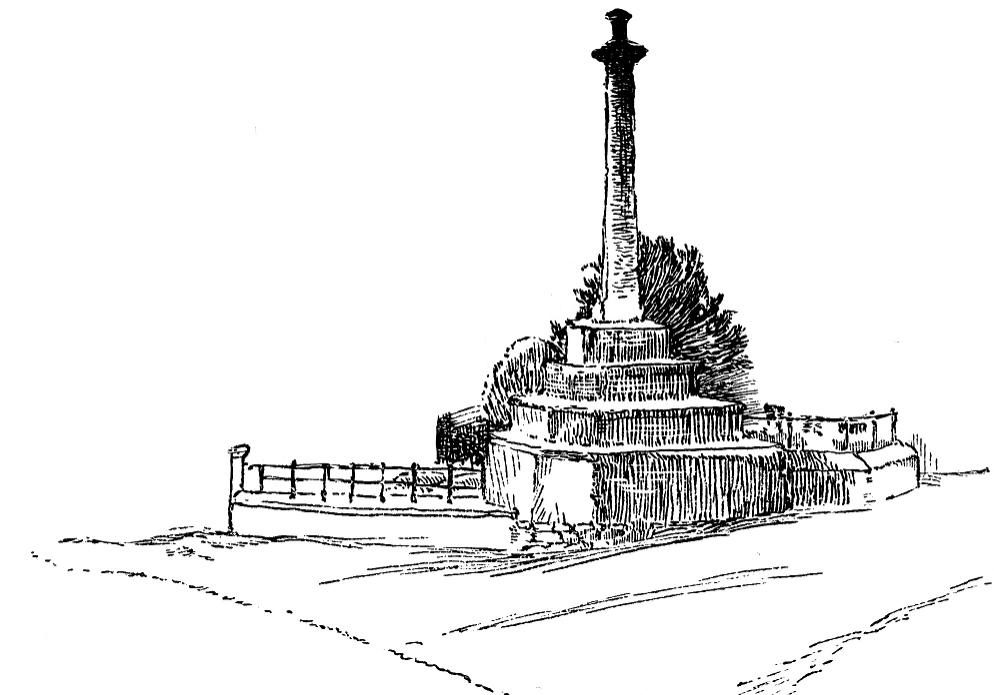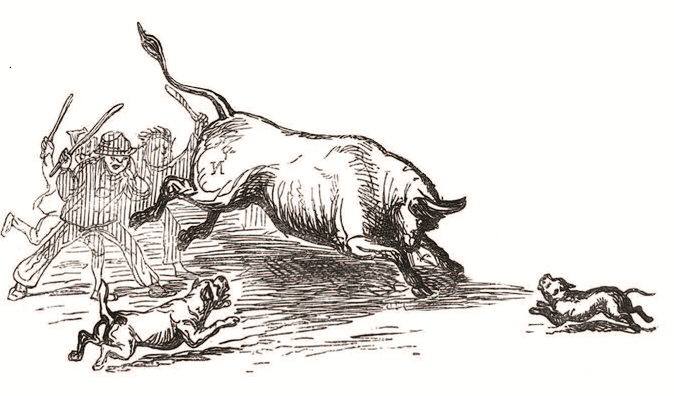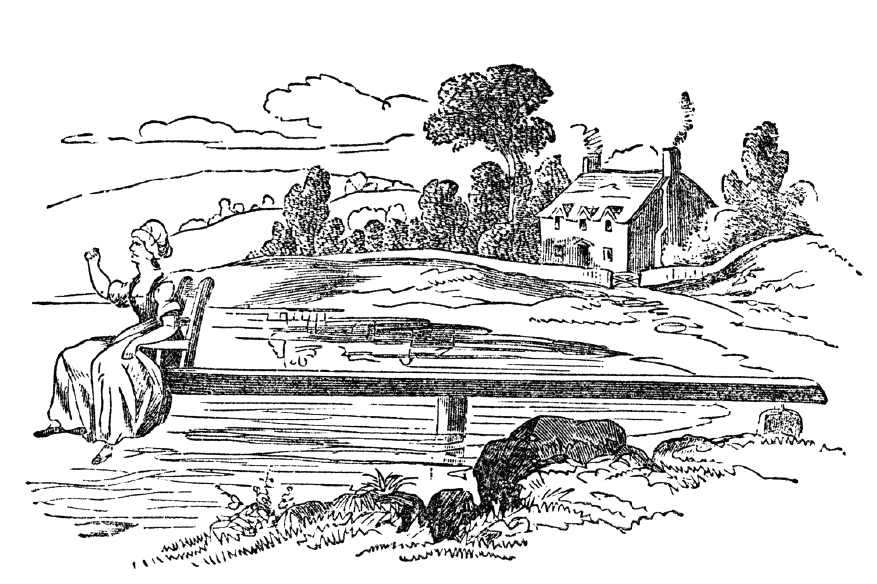
Don’t Cross the Green Man
by Graham Dugdale
GRAHAM DUGDALE INVESTIGATES THE APPEAL OF INGLEWHITE, A UNIQUE LANCASHIRE VILLAGE WITH A RICH AND VARIED HISTORY
A green patchwork of hedged fields and scattered farms characterises the foothills lying in the shadow of the Bowland Fell country of North Lancashire. Interspersed with a plethora of narrow lanes, it is easy to quickly lose one’s sense of direction amidst the grassy pastures. Yet such laid-back rustic charm constantly draws foreign tourists to England’s green and pleasant land. In medieval times, much of the countryside hereabouts was once owned by the Knights of St. John of Jerusalem. This monastic order possessed a religious and military role, diligently protecting the Christian Cross whilst following a life of poverty and chastity.
Most visitors to this part of Lancashire tend to aim for the Beacon Fell Country Park. It is well worth visiting one of the oldest such environments in the country. Originally named ‘Threlfall Beacon’ after a local family, it offers nature trails where an abundance of wildlife such as rabbits, hare and roe deer abound as one explores the woodland trails ensconced beneath a peruke of conifers – certainly a laudable objective in its own right. Yet the surrounding landscape also offers fine rambling terrain incorporating many unique features. Inglewhite, lying two miles southwest of the Park, is one such gem.
“At this time, tolls were collected from the passage of horse-drawn vehicles and animals ambling through the village – 2.5 old pence for a cow and the same for 20 sheep.”
Quaint, alluring, attractive and engaging; a host of cliches and more that can be applied to a village which has lost none of its fascination and allure over the years. Modern commercialisation has passed it by, thankfully failing to dent the ancient seduction emanating from moss-shrouded stone walls. The name Inglewhite stems from Gaelic, equating to white fire, which refers to will-o’-the-wisps once prevalent on the village green. These bewitching manifestations were ghostly lights reputedly seen by travellers at night. Such phenomena were common in days of yore when the imagination of simple country folk often ran riot.

Bull-Baiting
The village was designated as a conservation area in 1986, a status that was reaffirmed in 2011. It forms part of the Goosnargh Parish on the northern outskirts of Preston. A market cross dominates the village green where roads from four points of the compass converge. This was one of the principal reasons for the village’s importance in centuries past. Over three metres high, the mounting stone of the cross is inscribed with the appendage ‘HCIW. 1675’ and relates to Justice Warren, Lord of the Manor, who became a Chester judge before passing away in 1706.
At this time, tolls were collected from the passage of horse-drawn vehicles and animals ambling through the village – 2.5 old pence for a cow and the same for 20 sheep. Cattle and sheep fairs were a regular occurrence, particularly in Rogation Week. This religious festival was held five weeks after Easter, led by the local priest who conducted prayers for good harvests and prices for the sale of animals. Local produce was also sold at the fairs. That alone encouraged the locals to attend. In the nineteenth century, the vicar of Goosnargh banned the holding of fairs on a Sunday supposedly because he objected to the popular pastime of bull-baiting.
“Various hostelries enabled those who had travelled in from the surrounding countryside to slake their thirst with more potent refreshment. Of these, only the Green Man now remains.”
A fine array of stone cottages and farms line the village green, the names of Silk Mill Lane and Button Street testifying to the importance of industries that helped make Inglewhite a focus of commercial enterprise. Just south of the village is the congregational church erected in 1826 on an old chucking pit site. This bizarre site was where the method of giving judgement to suspected witches took place. A bizarre practice of ducking the poor accused in the pond allegedly proved that those who sank must be guilty. By the nineteenth century, commonsense had prevailed, such archaic traditions being consigned to history where they rightly belonged.
A more acceptable tradition continued by imbibing the waters of nearby St. Anne’s Well, dedicated to the mother of the Virgin Mary. Its waters were said to improve pilgrims’ health due to chalybite (iron carbonate) and sulphur. The original well was an impressive trough 2m x 1.5m x 1m deep complete with a stone plaque bearing the inscription – Fons Sanetae Annae. Sadly, the plaque has been lost, and the well is now a shadow of its former glory. Only a muddy spring remains, if you can find it, in a field adjacent to a narrow land leading to Longley Hall, which once owned much of the surrounding land.

Woman being ‘tried’ on the ducking stool
Various hostelries enabled those who had travelled in from the surrounding countryside to slake their thirst with more potent refreshment. Of these, only the Green Man now remains. In those days, it was a vital edifice where legal proceedings, including the coroner’s court, were held when unusual deaths had to be investigated. One such case has ensured the village and its pub go down in history due to the notoriety of a sad yet infamous murder at Higher Fairhurst, a farming hamlet no more than a half mile to the north.
The family in question were the Sandersons. After moving from a failed business in Lancaster, they came here to run a butcher’s shop, which also failed to make enough money. The husband was forced to take a labouring job to pay off his debts. His wife Ann became ever more depressed by the family’s dire situation, leaving for Manchester to live with her brother. After two months, she returned, and life continued at Fairhurst. But in the September of 1838, a passing farmer was summoned by Ann, who was extremely distressed that all her children had been supposedly struck down with food poisoning.
“The local doctor offered a slice of the suspect pudding to a duck which immediately fell ill and died”
After being called, the local doctor offered a slice of the suspect pudding to a duck which immediately fell ill and died. Within a few hours, all the Sanderson children had likewise passed away. So mortified was Ann Sanderson at this tragic turn of events that she sent for the priest to purge her soul. Before passing into the next world soon after, she confessed that increasing debt and severe depression had caused her to put arsenic into the food.
The inquest held at the Green Man in Inglewhite ruled the poor woman had suffered from ‘temporary insanity’. The infamy from the case drew thousands of onlookers to the funeral at Goosnargh. Led by the priest and a grief-stricken husband, the cortege wended its way to the cemetery. But due to the crowds, the coffins could not be consigned to their graves until late at night after the tumult had dispersed.

The next time you find yourself in this part of Lancashire, take time out to visit this tiny yet noteworthy settlement. Savour the peace and tranquillity, the timeless appeal that makes Inglewhite special in our nation’s enthralling heritage. But while enjoying a leisurely lunch at the Green Man, take heed of the grim circumstances that gave the village its rather baleful past.
NorthernLife July/August 23




